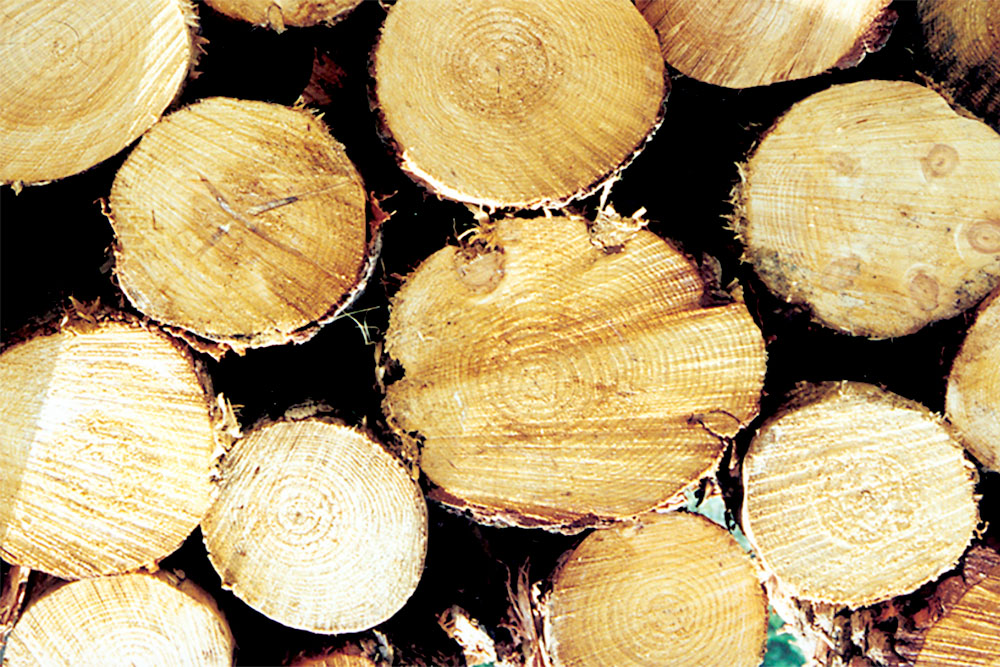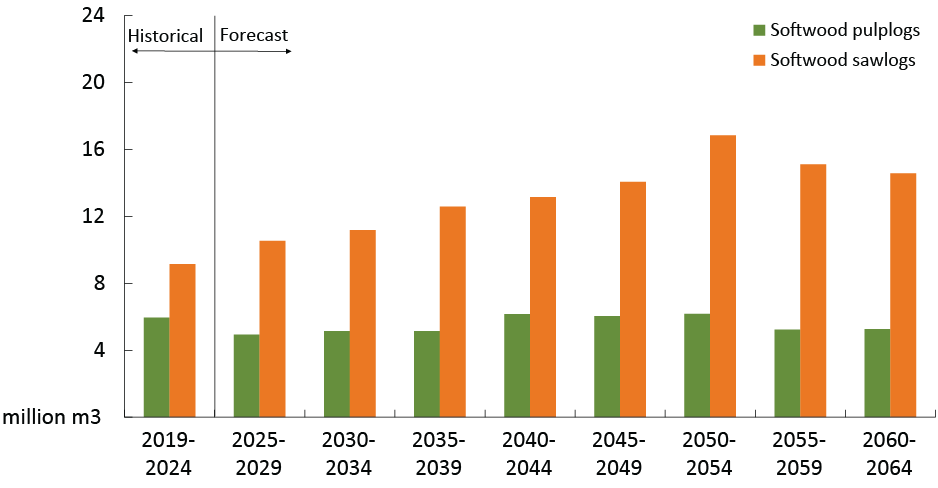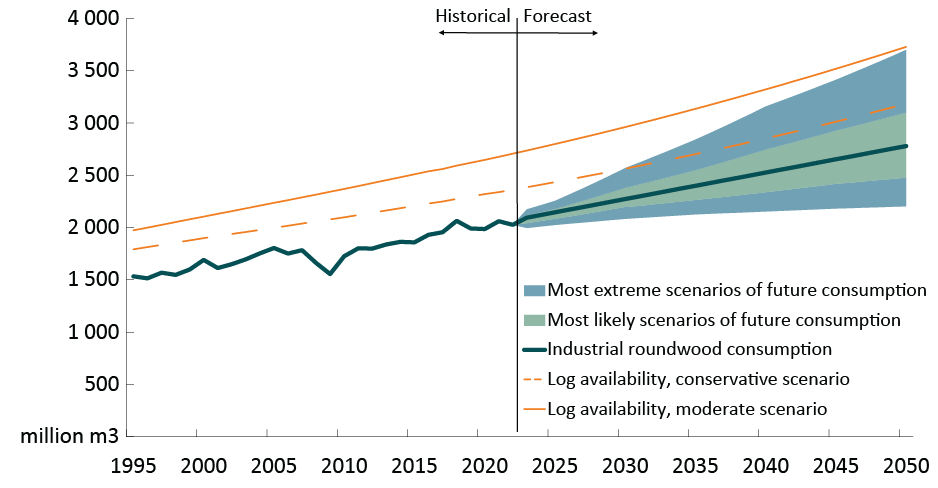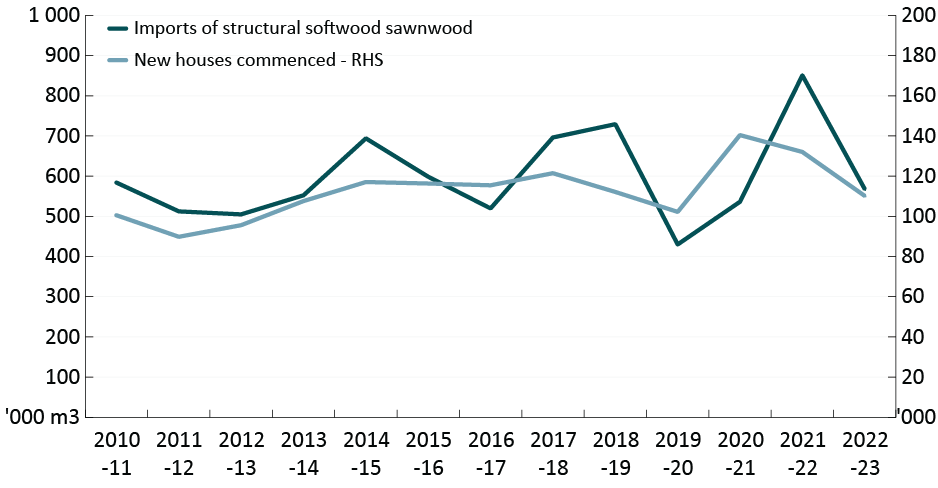
Australian wood volumes analysis
Authors: Forest Economics program.
Summary
The wood volumes analysis was announced as a 2022 election commitment during a period of uncertainty in the forest and wood products sector. Uncertainty was particularly acute for the residential construction sector due to upheaval through the COVID-19 pandemic. The purpose of the wood volumes analysis is to give confidence that Australians have sufficient access to forest and wood products for the construction sector, from a range of sources.
Australia’s forest and wood products market has evolved over many decades, through a range of government and industry-based investment. Australia’s forestry sector will continue to evolve, across the plantation estate, the processing sector, technological innovation in global product availability and the ability to use international markets across import and export markets.
Key findings
Australia has reliable access to both domestic and international markets for structural timber
- Domestic demand for structural softwood sawnwood may grow as much as 50% by 2050, incentivising domestic innovation.
- Domestic softwood sawlog availability is expected to increase 70% by 2050 – the largest volume of softwood sawlog availability on record.
- The ability to access imports is important to help manage the ups and downs in domestic demand.
- Wood product trade was affected by health-related restrictions during COVID-19, but trade resumed as restrictions were eased.
Strong growth projected in average annual softwood plantation log availability

Global markets will remain viable to meet global demand, but will increase in complexity
- International markets will continue to be a reliable resource, with log availability to remain above industrial roundwood consumption, globally.
- The growth of global consumption is uncertain – the majority of studies suggest growth between 9% and 83% from 2022 to 2050.
- Globally, log availability is above current consumption and expected to grow between 18% and 58% from 2022 to 2050.
- Global demand and supply patterns will change beyond 2050, with likely plantation expansion and product and technology advances.
Global log availability projected to stay above industrial roundwood consumption

Australia’s trade profile allows ad hoc peaks in demand to be met, capitalising on global value chains
- The international market provides benefits for the Australian forest and woods sector.
- For construction related trade, accessing international markets is important to manage spikes in domestic demand and to draw on a maturing market for a range of forest and wood products and advanced manufacturing.
- A diversified supply chain across both international and domestic markets enables risk mitigation and continuity of supply.
Structural softwood sawnwood imports reflect new house commencements

Supporting documents
The Centre for International Economics (CIE) prepared this report for ABARES on modelling demand for forest and wood products: Demand projections for forest and wood products - Literature review and proof-of-concept model
